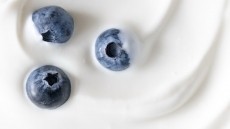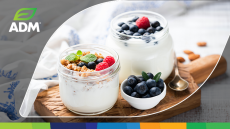Scientists look to cocoa husk fibre for low calorie foods
offer a valuable source of dietary fibre for the low-calorie food
segment, Spanish researchers report.
Writing in the journal Food Chemistry, researchers from the City University, Madrid, and the University of Barcelona report that, in addition to being rich in both soluble and insoluble fibre, the husks also contain antioxidant compounds that open up possibilities for health and presevatives. "The antioxidant capacity of this cocoa fibre and its physico-chemical properties make it a suitable product to be used in the preparation of low-calorie, high-fibre foods like chocolate cookies, chocolate cakes, dietetic chocolate supplements, etc. where the colour and flavour of this cocoa fibre might be advantageous," wrote lead author lead author Elena Lecumberri. In Europe and Japan, soluble fibre has the greater market share than insoluble. In the US, where the entire fibre market was worth $192.8m (€151.0m) in 2004, insoluble fibre dominates the market with $176.2m (€138.0m), and $16.6m (€13.0m) soluble. But while market analysts Frost and Sullivan predicts overall growth in the US to $470m (€369m) by 2011, the soluble fibre sector is expected to increase by almost twice the compound annual growth rate (CAGR) compared to insoluble fibre - 26.3 per cent compared to 13.1 per cent. The researchers behind the new study looked at the production of dietary fibre from cocoa bean husks for use as ingredients in the production of low-calorie, high-fibre foods. "Dietary guidelines recommend a minimum daily intake of dietary fibre (DF) of 25 g (equivalent to 12.5 g DF per 1000 calories consumed), which is considerably higher than the estimated intakes in Western countries," explained Lecumberri. "DF components like pectins, gums, cellulose and others have been used as functional ingredients by the food industry, with an extensive market of food by-products as DF sources," "In the present work we report the composition, as well as the antioxidant and some physico-chemical properties of a fibre-rich product obtained from cocoa bean husks, which might be used as an ingredient in the preparation of different food products and/or dietetic, low-calorie high-fibre foods," she added. Lecumberri and co-workers found that the extract contained mostly insoluble dietary fibre, which accounted for 80 per cent of the total dietary fibre and half of the total dry weight. Ten per cent of the total dietary fibre was made up of soluble fibre. "The presence of associated polyphenolic compounds (1.32 and 4.46 per cent of soluble polyphenols and condensed tannins, respectively) provides this fibre material with intrinsic antioxidant capacity," said the researchers. "Hydration properties (swelling and water holding capacity) and the glucose retardation index of cocoa fibre were similar to other natural commercial insoluble fibres," they added. Further research is needed to evaluate the economical and formulation aspects of using the cocoa husk extract ingredient. "Although rich in IDF, this cocoa product contains nearly 10 per cent of pectic substances, which is higher than the amount of soluble fibre usually supplied by other IDF-rich products like cereal brans commonly used as DF sources," concluded Lecumberri. Source: Food Chemistry (Elsevier) Volume 104, Issue 3, Pages 948-954, doi: 10.1016/j.foodchem.2006.12.054 "Dietary fibre composition, antioxidant capacity and physico-chemical properties of a fibre-rich product from cocoa (Theobroma cacao L.)"Authors: E. Lecumberri, R. Mateos, M. Izquierdo-Pulido, P. Ruperez, L. Goya and L. Bravo











